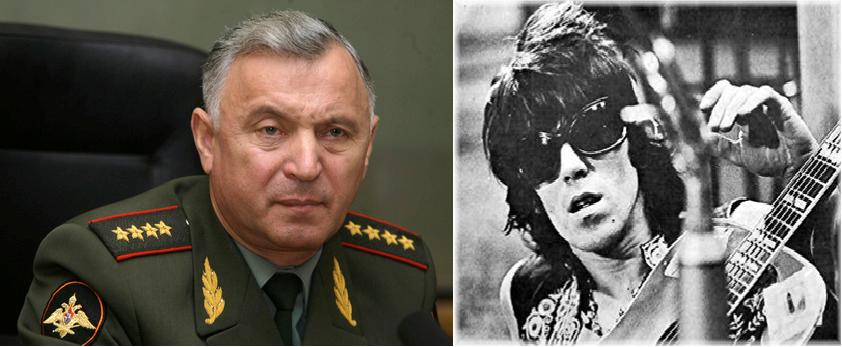Personality is revealed in our posture and movement. This is why people still interview for jobs, business people travel across the world for meetings and Internet dating can go very badly wrong. Academics and business consultants however have largely studied personality linguistically through questionnaires and the like, relegating the body to short-term “body language”. Assessments of how a people’s bodies reveal longer term character are however possible – known as somatic assessments. These reveal how personality shows up in the body but do not label people according to their more obvious body-types like Sheldon’s earlier typologies or ancient Indian ones – I am not claiming that all short or tall people have one personality type for example! I recently applied body personality assessments to the election candidates if you’d like a timely example of this at work.
I have been working with somatic assessments for some years and find them reliable indicators of such things as trustworthiness, leadership and how much fun someone will be to be around. I had a lot of practice in them while working for an NGO in conflict zones world-wide where I often did not speak the local language and come to rely upon them for my safety. More recently at an event in Brighton last month we combined embodied approaches to personality with Myers Briggs – probably the world’s most popular personality typology and in wide use in business. This was innovative work and as far as we know “embodied MBTI” has not been attempted before. The following has been put together with much help from Integration Training associate and MBTI trained coach Dawn Bentley:
…………………
There are four preferences (or dichotomies) that make up type in Myers Briggs (aka the MBTI) are:
- Extraversion – Introversion: attitudes or orientations of energy
- Sensing – Intuition: functions or processes of perceiving
- Thinking – Feeling: functions or processes of judging
- Judging – Perceiving: attitudes or orientations toward dealing with the outside world
Personality types result from the interactions amongst the four preferences and dictate our preferred way of operating in the world. But how are these preferences embodied? What distinctions might there be? Based on personal experiences and individual coaching work the following are some places to look and explore:
Extraversion – Introversion
This is about width – energetically taking up space and extending outwards (extrovert) or being contained and inward facing (introvert). Extraversion is about increasing energetically and introversion containing. As Extraversion is about contact so extroverts are likely to have more width (again not literally, but in terms of how much space they like to take up). This is one of the easiest to to see in a person and may show up as inwards turned feet and held in arms and gestures (introvert) or open posture and engaging eye contact (extroverted) – although as with all of these, short term body language, contextual and environmental factors (e.g. is it cold?) need to be taken into account.
Images – two world class business leaders – who is the more extrovert? Note Branson’s shoulder roll-in – a common introvert posture.
Sensing – Intuition
Sensing preferences will rely on their experience and what is real; therefore likely to be more back and a grounded. Intuition preference is all about possibility, trends, patterns and opportunity therefore likely to be more open and less grounded – some may not be grounded at all – ‘head in the clouds’. Back and down vs up and forwards.
Thinking – Feeling
Thinking is all about logic and fact so thinking inclined people lead much more with the head where Feeling is about values and harmony so they lead with the heart more. General softness and openness may also be found more in feeling types who are literally feeling their bodies more than thinking types who may have more of what is known as “armouring” (chronic contractions of musculature from and enabling not feeling).
Image – Steve jobs head out front with “armoured” jaw and brow (seen walking in profile he is an even more obvious head lead) and hearty comedian Michael Mcintyre leading with his chest
Judging – Perceiving
Perceiving is about being in the moment and a sense of freedom and curiosity so possibly looking at a relaxed body, softer eyes and maybe laid back. Judging is about order and getting to the destination – a very clear route from a-z. Likely to be more focused therefore possibly more leaning forward and a rigidity in the body.
Images – a military officer – an exemplar of judging – focus forward (and also thinking and sensing I’d guess) and Keith Richards going with the flow of a perceiver (and also intuitively the up and away look- though this might just be the drugs). Even without the uniforms could you guess which person was the artist?
The ‘art’ of using MBTI is to build personal agility and flexibility around the preferences so maybe somatic/embodied work and practices is another way of achieving this.” Note the complexity of the interactions at work in the last photographs both in terms of the four preferences and also situational and cultural factors. Integration Training will be exploring this topic more and I would state that our guesses as to body and personality are tentative, should be treated with caution and are in need of more rigorous testing. Such research would be relatively straightforward and I welcome academics or psychometric companies who are interested in this to get in touch.



Discussion